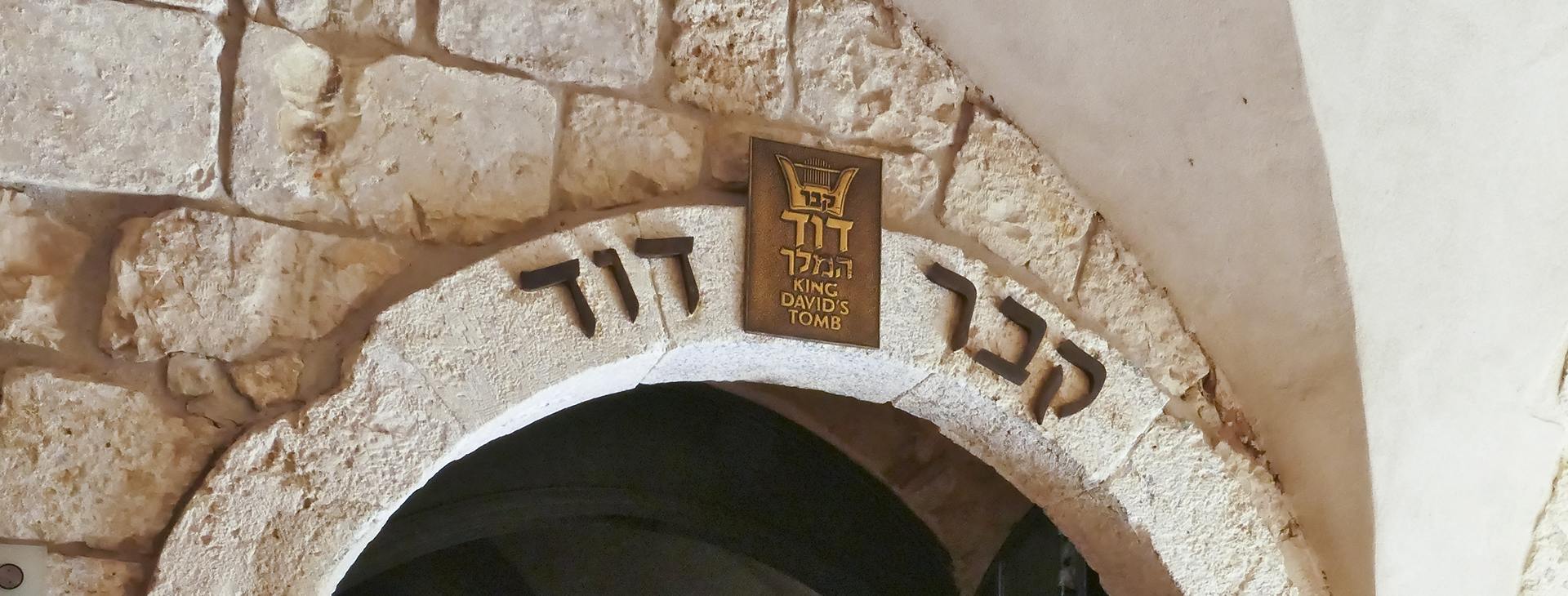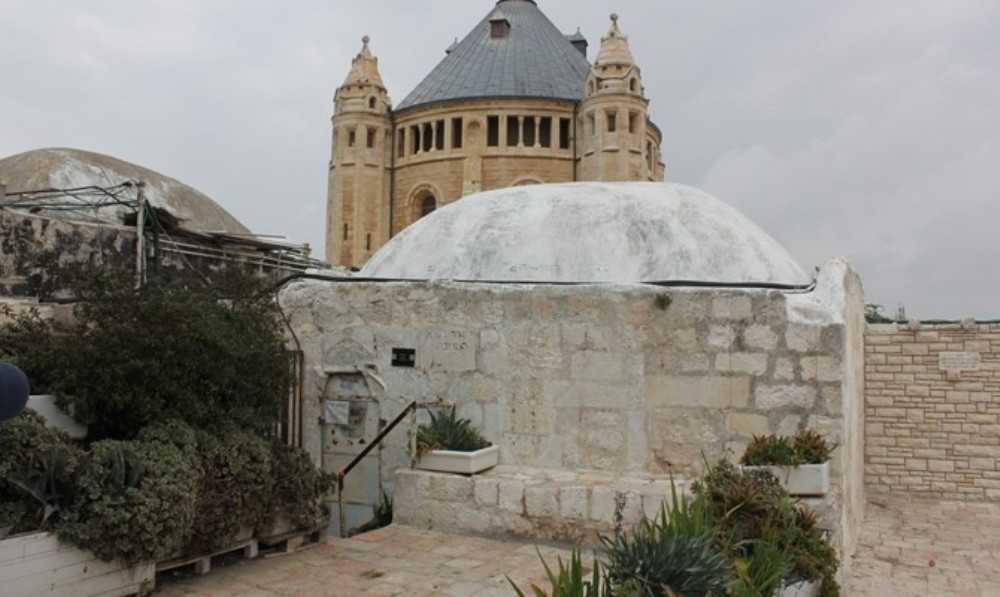According to Jewish, Christian, and Muslim traditions, David's Tomb is located on Mount Zion (in front of the Zion Gate), even though the Bible states that King David was buried in the City of David. This is a complex from the Crusader period, and the building where the Tomb is located is in the underground hall of an ancient Crusader church. The long Tomb is wrapped in a veil and is in the center of an inner room you can visit (with separate entrances for men and women).
Behind the coffin, you will notice a niche in the wall from which you can look towards the Temple Mount. On the floor above the Tomb is the room of the Last Supper, one of the most sacred sites for Christianity. On the building's roof is an impressive view of the Temple Mount and a mosque tower built by the Turks in the 16th century. Hence the sanctity of the place for the three religions.
About the history of David's Tomb
The tradition of David's Tomb in this place was first recorded in the ninth century by Muslims and was adopted over the generations by many believers. The building where the Tomb is located was the 'crypt,' the underground hall of the crusader church. The building got its current form in the 14th century, when Franciscan monks, the guardians of the Holy Land, renovated it.
In the 16th century, Muslims expelled the Franciscan monks. The building became a mosque and was used for hundreds of years for the prayers of the Muslims, who also sanctify King David as one of the prophets. Today, the site is mainly used by Jews and is run as a synagogue.
The tombstone is in the inner room, with separate entrances for men and women. In the center of the room stands a tombstone wrapped in a veil. Behind the coffin is a niche in the wall, possibly a remnant of an ancient synagogue that was remembered in the Byzantine period as one of the seven synagogues on Mount Zion.
In the past, the walls were decorated with colorful tiles from when the space was used as a mosque. These were Iznik tiles named after the city in Turkey, where they were produced about 200 years ago. These tiles were shattered in a criminal vandalism attack. On the floor above the Tomb is the room of the Last Supper, one of the holy sites for Christianity. The outer extension (exiting the tomb complex to the left) is an inner courtyard surrounded by vaults from the Franciscan monastery that was located here in the 14th century. This closed courtyard, typical of many monasteries in Europe, is called a "cloister."
The courtyards were designed to provide a quiet and protected place for the monks and priests who lived in the church compounds. The rooms with small windows were built behind the portico. The covered corridors provided protection from the rain, and through the central space, there was access to the open air. Here a cistern was built under the yard. In monasteries or other churches, the courtyard is used for cultivating ornamental plants, vegetable gardens, and even raising animals.
On the building's roof are an impressive observation deck and the mosque's minaret, built by the Turks in the 16th century after the expulsion of the Christians from Mount Zion. The complex was then converted into a khan - a road inn for caravans that arrived in Jerusalem after the city gates were closed at night.
Today, students of the Diaspora yeshiva, coming from all over the world, live in the rooms scattered on the different floors of the complex. In one of the nearby halls, Jews usually light candles in honor of King David. Those interested can visit several other sites on Mount Zion: the Holocaust basement, the Dormitory Church, Oskar Schindler's grave, and the Church of St. Peter Inglicanto.












